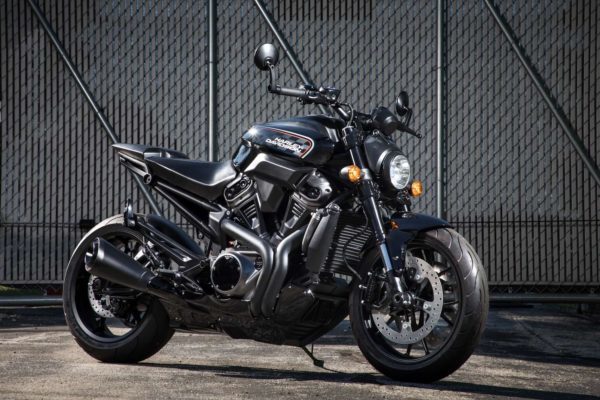Your motorbike oil cooler is the crucial component that you shouldn’t ignore even if your motorbike frequently starts overheating, and that’s why the question arises, what are the signs of a malfunctioning motorcycle oil cooler?
An increase in the engine temperature, generating smoke or unwanted puns, discolored coolant, overheating symptoms, unusual smell, adulteration in coolant, and changing of color are some signs of the motorbike oil cooler. You can reduce the risk of motorbike oil coolers malfunctioning by regular inspection and treating the problem when it starts showing symptoms.
Let’s consider what it means and what you can do about it.
While writing this post, I leave no stone unturned so you can know everything about some signs of a malfunctioning motorcycle oil cooler.
Table of Contents
What are the Signs of a Malfunctioning Motorcycle Oil Cooler?
Indeed your motorbike oil coolers can make your motorbike cool enough so that you can enjoy great performance. Still, now the question arises, what are the signs of a malfunctioning motorcycle oil cooler?
An increase in the engine temperature, generating smoke or unwanted puns, discolored coolant, overheating symptoms, unusual smell, adulteration in coolant, and changing of color are some signs of the motorbike oil cooler. You can reduce the risk of motorbike oil coolers malfunctioning by regular inspection and treating the problem when it starts showing symptoms.
Let’s dive into the details.
Sign 1: Increased Engine Temperature:
Malfunctioning motorbike oil coolers can result in an increase in engine temperature, which can cause numerous problems. When the cooler fails to effectively decrease engine temperature beyond the optimal level, it can decrease engine performance, increase the risk of overheating, and potentially raise the risk of vital engine parts damage.
Sign 2: Poor Engine Lubrication:
A malfunctioned motorbike oil cooler can severely impact the lubrication and oil circulation, compromising the engine’s performance and longevity.
Inappropriate cooling can cause the engine to overheat, disrupting its viscosity and thus reducing its lubrication properties; insufficient lubrication can lead to increased friction, premature wear of engine components, and potential engine failure.
Sign 3: Oil Leaks or Drips:
Malfunctioning the oil cooler can also cause oil leakage or drips, the common areas of oil leakage include the connection between the engine or cooler.
A failure in the oil cooler can cause gaskets or seals to deteriorate, further leading to oil leaks. It’s also crucial to identify and address these leaks carefully as they not only indicate a problem with the oil cooler but can also result in oil loss, which further reduces lubrication and can cause potential damage if left unattended.
Sign 4: Discolored or Contaminated Oil:
Malfunctioned motorbike oil coolers can directly impact the quality of engine oil as heat buildup and inadequate cooling can cause oil contamination resulting in degraded oil or discoloration of oil.
When the oil cooler fails to decrease the engine heat, the oil can stay crossing the optimal engine oil temperature and start losing its lubricant properties. The breakdown can result in oil contamination, where the debris and impurities can mix with the oil, causing further dislocation and compromising the oil quality.
It would be best to work on the motorbike oil coolers if you ever start seeing the discovered or contaminated oil, and you should address the situation promptly to further reduce the engine damage.
Also, read my previous post where I discussed how the motorbike oil cooler works, CLICK HERE to read more about this.
Sign 5: Overheating Symptoms and Performance Issues:
Till now, it’s clear that malfunctioning motorbike oil coolers will directly influence overheating and cause various performance issues.
An engine overheating can cause overheating and show some signs, including an increase in the frequency of coolant loss or steam from the radiator. Additionally, these symptoms will adversely affect your motorbike engine health and performance.
If your motorbike engine starts vibrating, you’ll surely experience reduced power or misfire because of improper lubrication and increasing engine temperature. Addressing these symptoms promptly is crucial to prevent severe engine damage and maintain optimal performance.
Sign 6: Unusual Smells or Smoke:
When an oil cooler malfunctions, it can result in unusual smoke or smell emission; the high temperature starts causing the burning of oil, producing odors like acid.
Additionally, the high-temperature oil will start coming into contact with the motorbike engine parts, which further causes releases of smoke that shouldn’t be ignored.
These unusual smoke or smells are one of the clear indicators of oil cooler problems which you shouldn’t ignore if you want your motorbike temperature to be limited within the optimal temperature range.
Addressing these issues on time will protect your motorbike from overheating issues like viscous motorbike oil and friction between pistons and walls.
Sign 7: Coolant Contamination:
A malfunctioning oil cooler can lead to coolant contamination, harming the cooling system and engine components. When an oil cooler fails, it can cause a breach between the oil and coolant systems, leading to the mixing of fluids.
This contamination can contaminate coolant with engine oil or vice versa. Coolant contamination reduces the cooling system’s efficiency, as the oil or impurities can hinder heat transfer.
Additionally, contaminated coolant can form sludge or deposits, potentially clogging the cooling passages and causing overheating. It is essential to address coolant contamination promptly to prevent further damage to engine components and ensure proper cooling system functionality.
Sign 8: Audible Clues and Unusual Noises:
The rise in noise can also be a significant sign of the oil cooler malfunctioning problems. It arises because of damaged internal components friction, which causes unusual rattling noises.
It’s crucial to pay attention to these noises before they become a major issue; connecting specific sounds to oil cooler issues can help diagnose the problem and prevent potential component failures or further damage.
Sign 9: Decreased Fuel Efficiency:
Malfunctioning oil coolers can also cause a decrease in the fuel efficiency in a motorbike; when the oil coolers fail to effectively decrease the heat, the engine experience increases in the temperatures.
The higher creatures can negatively impact the combustion process by reducing the combustion efficiency. And ultimately, incomplete combustion will cause motorbikes to show decreases in motorbike performance fuel efficiency, and mileage.
Sign 10: Engine Warning Lights:
Issues with the oil cooler can trigger the activation of engine warning lights on the motorcycle’s dashboard. These warning lights are designed to alert the rider of potential problems related to oil temperature and lubrication.
For example, an illuminated oil pressure warning light may indicate a lack of proper lubrication due to oil cooler malfunctions. Additionally, an engine temperature warning light can indicate overheating caused by inadequate cooling.
Paying attention to these warning lights is crucial as they provide important indications of oil cooler-related issues.
Seeking professional assistance and addressing the problem promptly can help prevent further engine damage and maintain the overall health of the motorcycle.
Frequently Asked Questions:
What are the signs of a malfunctioning motorcycle oil cooler?
Signs of a malfunctioning motorcycle oil cooler include increased engine temperature, poor engine lubrication, oil leaks or drips, discolored or contaminated oil, overheating symptoms and performance issues, unusual smells or smoke, coolant contamination, audible noises, decreased fuel efficiency, and engine warning lights.
How does a malfunctioning oil cooler affect engine temperature?
A malfunctioning oil cooler can result in an increase in engine temperature, which can lead to decreased engine performance, increased risk of overheating, and potential damage to vital engine parts.
What happens to engine lubrication when the oil cooler malfunctions?
A malfunctioning oil cooler can compromise engine lubrication by causing the engine to overheat. Inadequate cooling can disrupt the viscosity of the engine oil, reducing its lubrication properties and potentially leading to increased friction and premature wear of engine components.
Are oil leaks or drips common signs of oil cooler malfunction?
Yes, oil leaks or drips can be common signs of oil cooler malfunction. When an oil cooler fails, it can cause gaskets or seals to deteriorate, leading to oil leaks at the connection points between the engine and the cooler.
How does a malfunctioning oil cooler affect the color and quality of engine oil?
A malfunctioning oil cooler can lead to oil contamination, resulting in discolored or contaminated engine oil. Heat buildup and inadequate cooling can cause oil to degrade and mix with impurities, compromising oil quality.
Final Verdict:
What are the signs of a malfunctioning motorcycle oil cooler? An increase in the engine temperature, generating smoke or unwanted puns, discolored coolant, overheating symptoms, unusual smell, adulteration in coolant, and changing of color are some signs of the motorbike oil cooler.
You can reduce the risk of motorbike oil coolers malfunctioning by regular inspection and treating the problem when it starts showing symptoms.
To make the engine performance up to par, it’s advisable to regularly inspect the motorbike oil coolers so that you can always protect your motorbike from all overheating issues.
John, this side! My passion for motorbikes started when I was 12. I experienced many accidents and even lost some friends too. And it inspired me to create this website so that no parents in this world would lose their child while enjoying riding.


